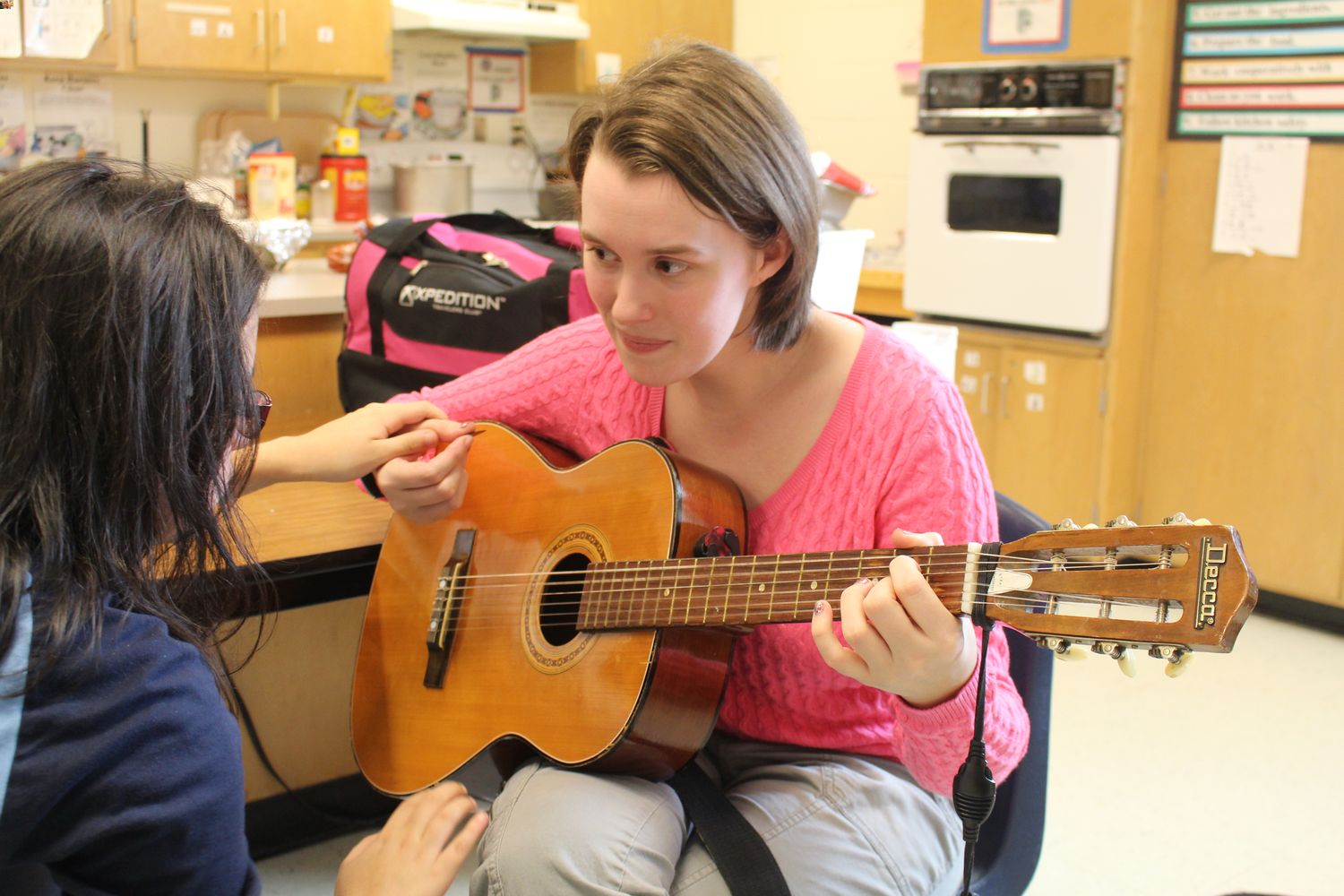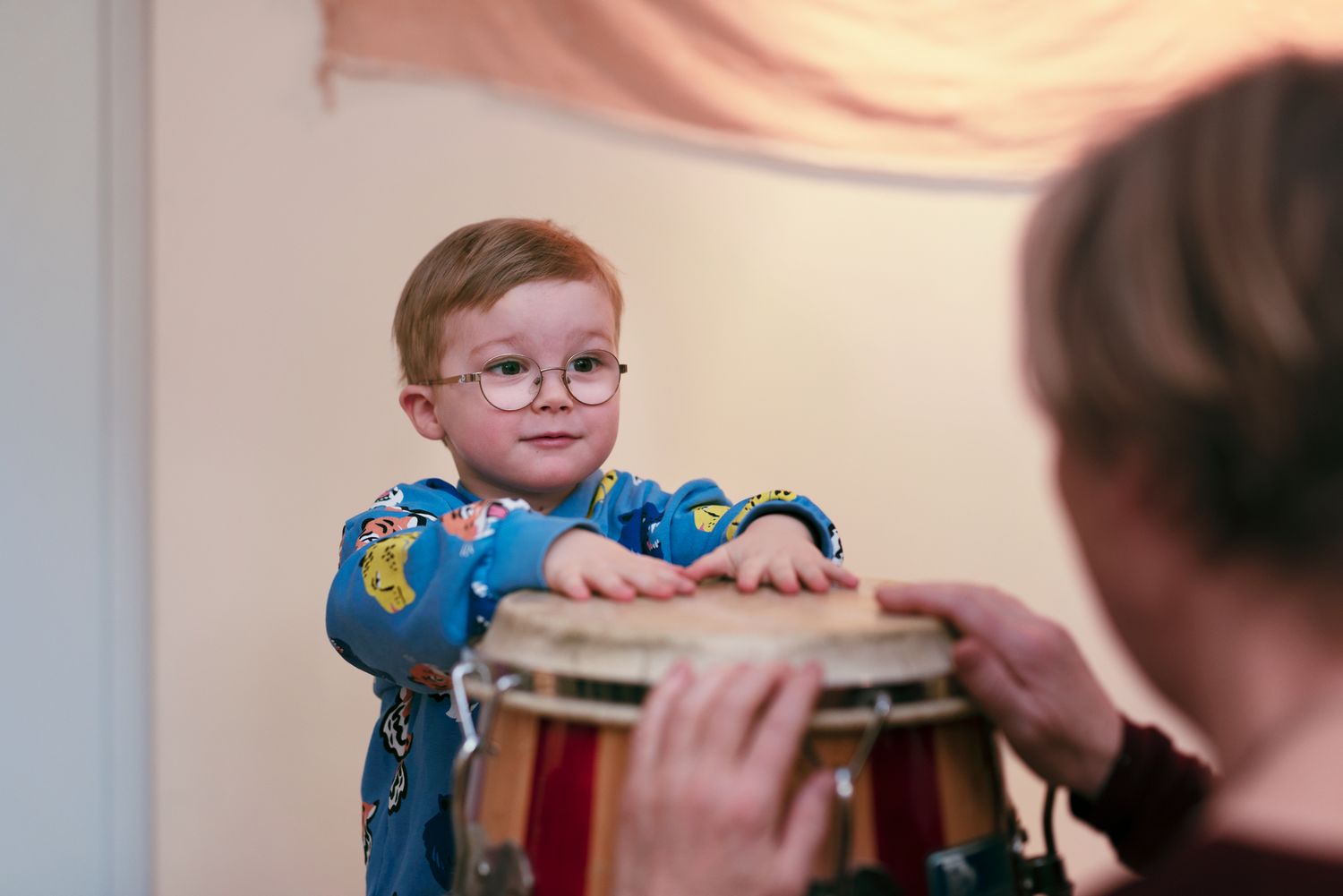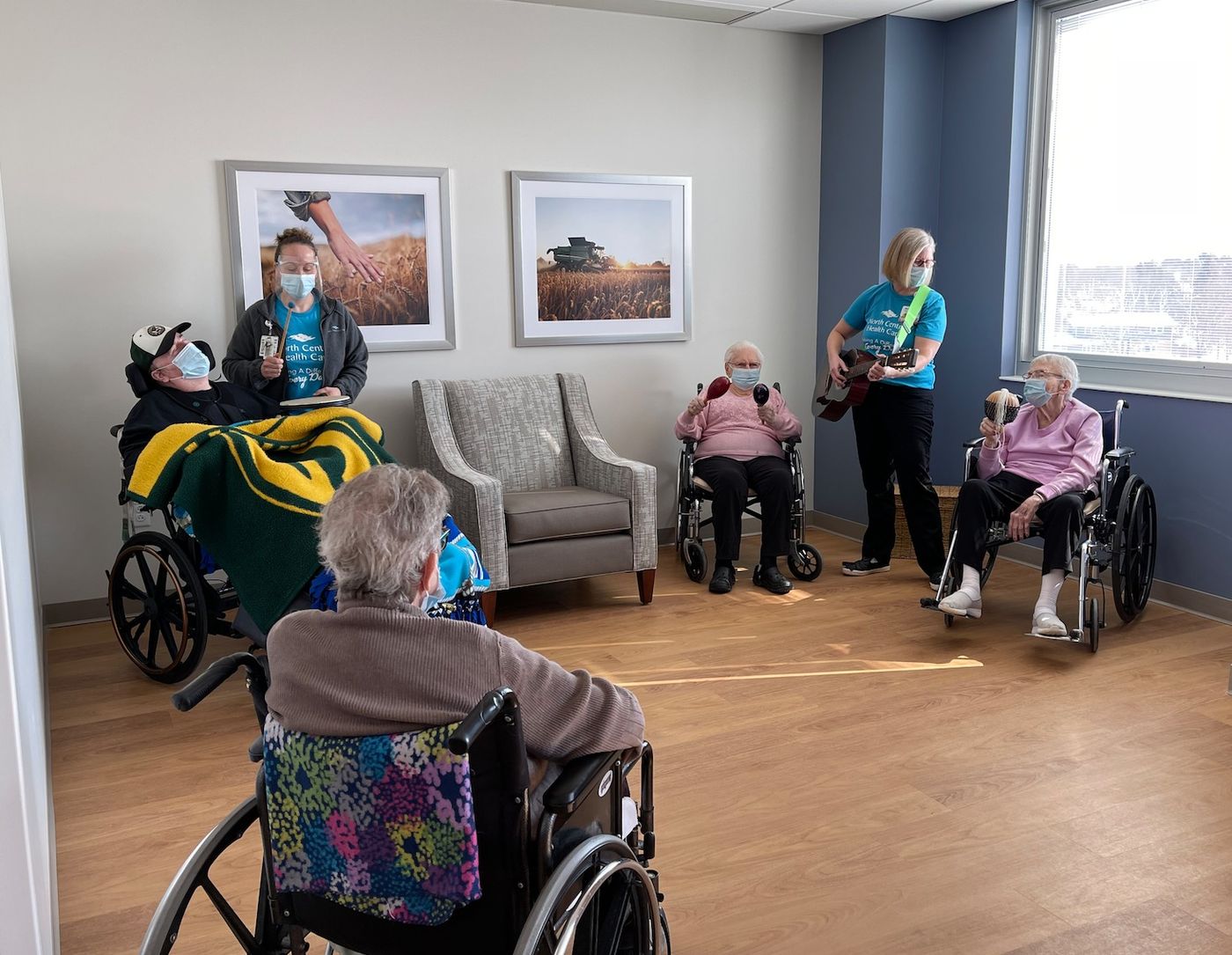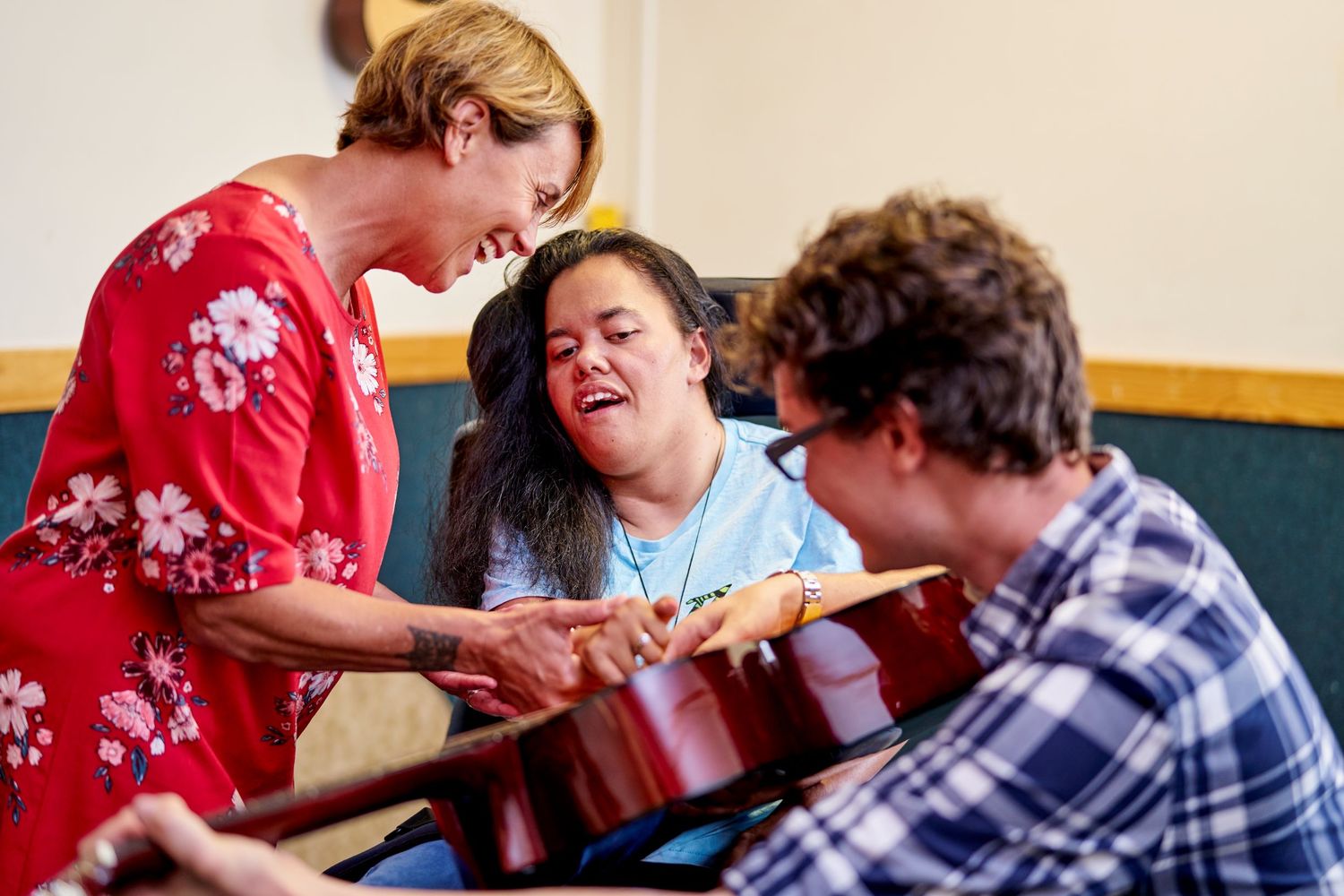Home>Events & Info>Music Therapy>What Is Reconstructive Music Therapy


Music Therapy
What Is Reconstructive Music Therapy
Published: February 1, 2024
Learn how music therapy can help individuals with various needs and conditions through the process of reconstructive music therapy. Discover the power of music in healing and enhancing well-being.
(Many of the links in this article redirect to a specific reviewed product. Your purchase of these products through affiliate links helps to generate commission for AudioLover.com, at no extra cost. Learn more)
Table of Contents
- Introduction
- Definition of Reconstructive Music Therapy
- The Role of Music in Reconstructive Therapy
- Benefits of Reconstructive Music Therapy
- The Process of Reconstructive Music Therapy
- Techniques Used in Reconstructive Music Therapy
- Case Studies on the Effectiveness of Reconstructive Music Therapy
- Limitations and Considerations in Reconstructive Music Therapy
- Conclusion
Introduction
Welcome to the world of Reconstructive Music Therapy! This innovative approach to therapy has gained recognition for its profound impact on individuals seeking healing and personal growth. Combining the power of music with therapeutic techniques, Reconstructive Music Therapy offers a unique avenue for emotional expression, self-discovery, and transformation.
Music has always been a universal language that speaks to our souls, evokes emotions, and connects us to our deepest selves and others. It has the ability to soothe our pain, uplift our spirits, and awaken our creativity. Recognizing the immense potential of music in healing, Reconstructive Music Therapy utilizes this intrinsic power to support individuals on their journey of self-transformation.
Unlike traditional forms of therapy, Reconstructive Music Therapy recognizes that individuals are not broken or in need of fixing. Instead, it takes a holistic and empowering approach by focusing on uncovering inherent strengths and facilitating personal growth. Through the use of intentional music interventions and therapeutic techniques, individuals are supported in exploring their emotions, resolving inner conflicts, healing trauma, and rebuilding their lives.
Reconstructive Music Therapy is a dynamic and flexible approach that can be tailored to meet the unique needs and goals of each individual. It can be utilized in a variety of settings, including hospitals, rehabilitation centers, mental health facilities, and private practices. Whether someone is struggling with anxiety, depression, grief, trauma, or simply seeking personal development, Reconstructive Music Therapy offers a safe and supportive space for growth and healing.
In this comprehensive guide, we will delve deeper into the world of Reconstructive Music Therapy. We will explore its definition, the role of music in therapy, the benefits it offers, the process involved, techniques used, and real-life case studies on its effectiveness. Additionally, we will address any limitations and considerations that may arise when utilizing this approach.
So, grab your headphones and get ready to embark on a musical journey of healing and transformation with Reconstructive Music Therapy!
Definition of Reconstructive Music Therapy
Reconstructive Music Therapy is an innovative and holistic approach to therapy that utilizes the power of music to facilitate personal growth, emotional healing, and self-discovery. It is based on the understanding that individuals possess inherent strengths and the capacity to rebuild their lives, rather than being broken or in need of fixing.
This therapeutic modality recognizes that music has a profound impact on our emotions, thoughts, and bodily responses. It taps into the universal language of music to create a safe and supportive environment for individuals to explore and express their innermost feelings, desires, and struggles.
Reconstructive Music Therapy delves beyond surface-level symptoms and addresses the underlying causes of emotional distress, trauma, and life challenges. It aims to support individuals in reconstructing their sense of self, relationships, and overall well-being through the transformative power of music.
Unlike traditional approaches to therapy, which may rely primarily on verbal communication, Reconstructive Music Therapy incorporates a variety of music-based interventions. These interventions may include songwriting, improvisation, guided imagery, listening to carefully selected music, and playing or learning musical instruments.
Through these musical experiences, clients are encouraged to express their emotions and experiences in a nonverbal and symbolic manner. This allows for a deeper exploration of their emotions and facilitates the processing and integration of difficult or traumatic experiences.
Reconstructive Music Therapy is conducted by trained and certified music therapists who possess a deep understanding of music’s therapeutic potential and how it can be used to meet the unique needs of each individual. These therapists work collaboratively with clients to create a personalized plan of treatment that integrates music interventions with traditional counseling techniques.
Overall, Reconstructive Music Therapy provides a transformative approach to therapy that recognizes the inherent strengths of individuals, harnesses the power of music, and empowers clients to reconstruct their lives from a place of healing and growth.
The Role of Music in Reconstructive Therapy
Music plays a pivotal role in Reconstructive Music Therapy, serving as the core medium for emotional expression, exploration, and healing. It is through the power of music that individuals are able to tap into their innermost thoughts, feelings, and experiences in a nonverbal and deeply symbolic way.
Music has the ability to elicit strong emotional responses and create a bridge between the conscious and unconscious mind. It can stir up memories, evoke feelings, and provide a safe outlet for expressing emotions that may be difficult to put into words. This makes music a powerful tool for therapy, especially for individuals who may struggle to verbalize or make sense of their experiences through traditional talk therapy alone.
In Reconstructive Music Therapy, music is used strategically and intentionally to support individuals in their healing and personal growth journeys. The therapist selects specific songs, genres, or musical activities that resonate with the client’s experiences, emotions, and therapeutic goals. The chosen music acts as a catalyst for exploration, reflection, and transformation.
Music also has the ability to regulate emotions and create a sense of safety and comfort. It can help individuals relax, reduce anxiety, and create a supportive space for emotional expression. This is particularly important in the context of trauma therapy, where a gentle and regulated approach is often necessary to ensure the client’s well-being.
Additionally, music in Reconstructive Therapy encourages self-reflection and introspection. It invites individuals to explore their emotional landscape, unconscious beliefs, and patterns of thinking. Through the process of engaging with music, clients gain insight into their own experiences, values, and aspirations, leading to a deeper understanding of themselves and their life circumstances.
Another important role of music in Reconstructive Therapy is its ability to foster connection and promote therapeutic relationships. Music has the power to communicate and bond people across cultures, languages, and backgrounds. It serves as a shared language that can bridge the gap between therapist and client, facilitating trust, empathy, and collaboration.
Overall, the role of music in Reconstructive Therapy is multifaceted. It acts as a means of communication, emotional expression, exploration, and regulation. By harnessing the therapeutic potential of music, individuals are able to embark on a journey of healing and transformation, reconstructing their lives from a place of empowerment and self-discovery.
Benefits of Reconstructive Music Therapy
Reconstructive Music Therapy offers a wide range of benefits for individuals seeking healing, personal growth, and emotional well-being. By tapping into the transformative power of music, this therapeutic approach provides unique opportunities for self-expression, exploration, and healing. Here are some of the key benefits of Reconstructive Music Therapy:
- Emotional Regulation: Music has the ability to regulate emotions and create a sense of calm and comfort. Through Reconstructive Music Therapy, individuals can learn to identify and manage their emotions more effectively, reducing anxiety and enhancing overall emotional well-being.
- Emotional Expression: Music provides a safe and nonverbal outlet for emotional expression. It allows individuals to express and process difficult emotions that may be challenging to articulate through words alone. This can be particularly beneficial for individuals who struggle with verbal communication or have experienced trauma.
- Self-Exploration and Insight: Engaging with music in therapy encourages self-reflection and introspection. It invites individuals to explore their inner world, gain insight into their experiences and beliefs, and develop a deeper understanding of themselves. This increased self-awareness can lead to personal growth and transformation.
- Stress Reduction: Listening to carefully selected music or engaging in musical activities can promote relaxation and reduce stress. Music has been shown to lower heart rate, blood pressure, and stress hormone levels. Reconstructive Music Therapy offers a unique and enjoyable way to manage stress and promote overall well-being.
- Improved Communication: Music serves as a powerful means of communication, transcending language barriers and facilitating connection. In therapy, music can enhance the therapeutic relationship, promote effective communication, and foster trust and collaboration between the therapist and client.
- Resolving Trauma and Healing: Reconstructive Music Therapy can be particularly effective in the treatment of trauma. Music helps individuals process traumatic experiences in a safe and regulated way, promoting healing and integration. The rhythmic and melodic elements of music can also support the regulation of the nervous system, aiding in trauma recovery.
- Promoting Personal Growth and Empowerment: Reconstructive Therapy recognizes and supports individuals in reconstructing their lives from a place of empowerment. By focusing on inherent strengths and utilizing music as a tool for growth, this therapy approach encourages individuals to take an active role in their healing journey and build a meaningful and fulfilling life.
These are just a few examples of the many benefits that Reconstructive Music Therapy can offer. Whether someone is struggling with mental health issues, recovering from trauma, or simply seeking personal development, Reconstructive Music Therapy provides a unique and effective pathway towards healing, growth, and self-discovery.
The Process of Reconstructive Music Therapy
Reconstructive Music Therapy follows a structured and collaborative process that is tailored to meet the unique needs and goals of each individual. The therapy process typically involves several stages, including assessment, goal-setting, intervention, and evaluation. Here is an overview of the key elements involved in the process of Reconstructive Music Therapy:
- Assessment: The therapy process begins with an initial assessment, where the music therapist gathers relevant information about the client’s presenting concerns, history, and musical preferences. This assessment may involve various forms, such as interviews, questionnaires, and music listening exercises. The goal is to gain a comprehensive understanding of the client’s needs, strengths, and aspirations.
- Goal-Setting: Based on the assessment, the music therapist collaborates with the client to establish therapy goals. These goals may include improving emotional regulation, exploring and resolving past trauma, enhancing self-expression, or fostering personal growth. The goals are personalized and specific to the individual, providing a clear direction for the therapy process.
- Intervention: The core of Reconstructive Music Therapy lies in the intentional use of music-based interventions. These interventions may involve activities such as songwriting, improvisation, music listening, musical games, or learning and playing musical instruments. The choice of interventions is guided by the client’s goals and preferences, as well as the therapist’s expertise. The music therapist guides and supports the client through these activities, creating a safe and nurturing environment for exploration and healing.
- Processing and Reflection: Throughout the therapy process, the music therapist actively encourages the client to reflect on their experiences during and after music interventions. This may involve verbal sharing, journaling, or engaging in creative arts exercises. The reflective process allows for deepening understanding, insight, and integration of emotions and experiences that arise during the musical interactions.
- Therapeutic Relationship: The therapeutic relationship between the music therapist and the client is a crucial element in Reconstructive Music Therapy. The therapist establishes a safe and non-judgmental space for the client to express themselves authentically and process their emotions. This relationship is built on trust, empathy, and collaboration, allowing for a therapeutic alliance that supports the healing and growth process.
- Evaluation and Progress Monitoring: Regular evaluation and progress monitoring are essential components of Reconstructive Music Therapy. The music therapist continuously assesses the client’s progress towards their therapy goals and makes necessary adjustments to the therapeutic interventions. Ongoing feedback and open communication between the therapist and client ensure that the therapy remains effective and aligned with the client’s evolving needs.
Reconstructive Music Therapy is a dynamic and client-centered process that recognizes the importance of individual preferences, needs, and goals. Through the collaborative efforts of the client and the music therapist, individuals can embark on a transformative journey of self-discovery, healing, and personal growth.
Techniques Used in Reconstructive Music Therapy
Reconstructive Music Therapy utilizes a variety of music-based techniques to facilitate healing, self-expression, and personal growth. These techniques are carefully selected and tailored to meet the unique needs and goals of each individual. Here are some of the key techniques used in Reconstructive Music Therapy:
- Songwriting: Songwriting is a powerful technique that allows individuals to express their thoughts and emotions through the creation of original songs. Through the process of lyrics writing, melody composition, and musical arrangement, clients can explore their experiences, gain insight, and communicate their innermost feelings in a creative and symbolic way.
- Improvisation: Improvisation involves spontaneous musical creation without predetermined structures or rules. In Reconstructive Music Therapy, improvisation provides a space for individuals to freely express themselves, explore emotions, and access their inner creativity. It allows for uninhibited self-expression and can unveil deep insights and emotional release.
- Music Listening: Music listening is a central component of Reconstructive Music Therapy. By carefully selecting and sharing music that resonates with the client’s emotions and experiences, the therapist creates a therapeutic atmosphere and supports emotional exploration. Active music listening exercises allow individuals to connect with the music on a deep level, eliciting emotional responses and facilitating personal reflection.
- Musical Games and Activities: Musical games and activities can be employed to foster engagement, connection, and expression. These activities may involve rhythm exercises, vocalization exercises, movement to music, or playing musical instruments. Such games and activities provide a playful and creative outlet for individuals to express themselves, build confidence, and engage in a therapeutic process within a supportive and enjoyable environment.
- Musical Imagery: Musical imagery involves creating mental images and narratives inspired by specific music or musical elements. In Reconstructive Music Therapy, clients listen to carefully selected music and are encouraged to visualize images, scenes, or stories that arise in response. This technique allows for deepening emotional exploration, introspection, and the integration of personal experiences.
- Guided Music Listening: Guided music listening involves the therapist guiding the client through a music listening experience, providing prompts or questions to facilitate reflection and emotional processing. This technique allows individuals to delve into their emotions and experiences with the therapist’s support, gaining insight into their inner world and fostering personal growth.
- Musical Relaxation Techniques: Musical relaxation techniques utilize calming and soothing music to promote relaxation and stress reduction. These techniques often involve slow tempo music, gentle melodies, and peaceful sounds. By engaging with these musical relaxation techniques, individuals can experience a sense of calmness, balance, and rejuvenation.
It is important to note that the selection and utilization of specific techniques in Reconstructive Music Therapy are tailored to each individual’s unique needs, preferences, and therapeutic goals. The music therapist draws upon their expertise and deep understanding of how music can support emotional expression, exploration, and growth to create a therapeutic experience that is meaningful and transformative.
Case Studies on the Effectiveness of Reconstructive Music Therapy
Reconstructive Music Therapy has shown promising results in various case studies, demonstrating its effectiveness in promoting healing, personal growth, and emotional well-being. Here are a few examples of case studies that highlight the positive outcomes of Reconstructive Music Therapy:
- Case Study 1: Healing Trauma
In a case study involving a survivor of childhood trauma, Reconstructive Music Therapy was used to support the healing process. Through songwriting and improvisation, the client was able to express and process their traumatic experiences in a safe and supportive environment. The therapist guided the client through music-based interventions focused on releasing emotions, building resilience, and fostering self-compassion. Over time, the client reported a reduction in trauma-related symptoms, improved emotional regulation, and a renewed sense of hope and empowerment. - Case Study 2: Anxiety and Stress Reduction
A case study involving individuals with high levels of anxiety and stress explored the effectiveness of Reconstructive Music Therapy in promoting relaxation and stress reduction. Guided music listening and musical relaxation techniques were utilized to create a calming and soothing environment. The participants reported a significant decrease in anxiety symptoms, improved sleep quality, and a sense of inner calmness after engaging in Reconstructive Music Therapy sessions. The findings suggested that music-based interventions can be an effective complement to traditional anxiety treatment modalities. - Case Study 3: Enhancing Emotional Expression
In this case study, Reconstructive Music Therapy was employed to help individuals with difficulty expressing their emotions verbally. Through musical improvisation and guided music listening exercises, the participants were able to connect with their emotions and express them nonverbally. Over the course of the therapy sessions, the participants showed greater comfort in expressing emotions both within the therapy setting and in their daily lives. The use of Reconstructive Music Therapy provided an alternative and effective outlet for emotional expression and communication. - Case Study 4: Building Self-Esteem and Confidence
A case study focused on using Reconstructive Music Therapy to enhance self-esteem and confidence in individuals experiencing low self-worth. Through musical activities such as playing instruments and engaging in songwriting, the participants were able to tap into their musical abilities and discover a sense of accomplishment. The therapeutic process facilitated an increase in self-confidence, self-acceptance, and self-expression. This case study demonstrated the transformative power of Reconstructive Music Therapy in promoting positive self-identity and building a stronger sense of self.
These case studies are just a snapshot of the numerous examples that highlight the benefits and effectiveness of Reconstructive Music Therapy. They provide evidence for the positive impact of music-based interventions in various therapeutic contexts, including trauma recovery, anxiety reduction, emotional expression, and self-esteem building.
It is important to note that while these case studies demonstrate positive outcomes, the effectiveness of Reconstructive Music Therapy may vary for each individual. The therapeutic process is highly personalized and tailored to meet the unique needs of the client. Therefore, a comprehensive assessment and collaborative treatment plan are fundamental in achieving optimal results.
Limitations and Considerations in Reconstructive Music Therapy
While Reconstructive Music Therapy has shown great promise in promoting healing and personal growth, it is important to consider certain limitations and factors when utilizing this therapeutic approach. Here are some key limitations and considerations to bear in mind:
- Individual Variability: Each individual is unique, and what works for one person may not work for another. It is crucial to tailor the therapy approach to the specific needs, preferences, and abilities of the individual. Flexibility and adaptability are necessary to ensure the most effective and appropriate use of Reconstructive Music Therapy techniques.
- Musical Competency: While musical skill or talent is not a prerequisite for Reconstructive Music Therapy, it is important to consider the individual’s comfort level with music and their willingness to engage in musical activities. Some individuals may feel anxious or intimidated by musical tasks, and it is essential to create a safe and non-judgmental environment that allows for exploration and expression at their own pace.
- Emotional Risks: Engaging in deep emotional exploration and expression can sometimes bring up intense emotions or memories that may be challenging to manage in a therapy session. The therapist needs to be prepared to provide emotional support, appropriate interventions, and referral to additional resources if necessary.
- Lack of Research: While there is a growing body of research on the effectiveness of music therapy, more studies specifically focusing on Reconstructive Music Therapy are needed. Further research can help validate the efficacy of this approach, identify optimal techniques and interventions, and expand the evidence base to support its use in diverse populations and contexts.
- Ethical Considerations: Practitioners of Reconstructive Music Therapy must adhere to professional guidelines and ethical standards. This includes obtaining appropriate consent, maintaining client confidentiality, and regularly updating their skills and knowledge through continuing education and supervision.
- Collaboration with Other Professionals: Reconstructive Music Therapy may be most effective when integrated as part of a multidisciplinary approach. Collaborating with other healthcare professionals, such as counselors, psychologists, or medical practitioners, can ensure comprehensive and coordinated care for clients with complex needs.
- Cultural Sensitivity: It is essential to consider cultural diversity and sensitivity when practicing Reconstructive Music Therapy. Different cultures may have unique beliefs, values, and attitudes towards music and therapy. The therapist should engage in cultural competence, respecting and incorporating the cultural backgrounds and preferences of the individuals they work with.
By recognizing these limitations and considerations, therapists can navigate potential challenges and optimize the benefits of Reconstructive Music Therapy. Open communication, ongoing assessment, and a client-centered approach are key to mitigating these limitations and fostering a safe and effective therapeutic experience.
Conclusion
Reconstructive Music Therapy is a transformative and holistic approach to therapy that harnesses the power of music to support healing, personal growth, and emotional well-being. Through intentional music-based interventions, individuals are able to express their emotions, explore their inner world, and reconstruct their lives from a place of empowerment and self-discovery. The benefits of this therapeutic approach are vast, ranging from emotional regulation and stress reduction to trauma healing and enhanced self-expression.
Reconstructive Music Therapy recognizes that individuals possess inherent strengths and the ability to rebuild their lives. By utilizing the universal language of music, individuals are able to tap into their emotions and experiences in a nonverbal and deeply symbolic way. Through songwriting, improvisation, music listening, and other techniques, clients gain insight, process emotions, and foster personal growth.
While Reconstructive Music Therapy has shown great promise, it is important to consider individual variability, musical competency, and potential emotional risks. Practitioners must maintain ethical standards and collaborate with other professionals when necessary. Further research is also needed to expand the evidence base and validate the efficacy of this therapeutic approach.
In conclusion, Reconstructive Music Therapy offers a dynamic and empowering pathway towards healing and self-transformation. By combining the power of music with therapeutic techniques, this approach provides a safe and supportive space for individuals to explore their emotions, resolve inner conflicts, heal from trauma, and rebuild their lives. Whether someone is seeking relief from anxiety, processing trauma, or simply embarking on a personal growth journey, Reconstructive Music Therapy offers a unique and effective avenue for self-discovery, expression, and healing.











